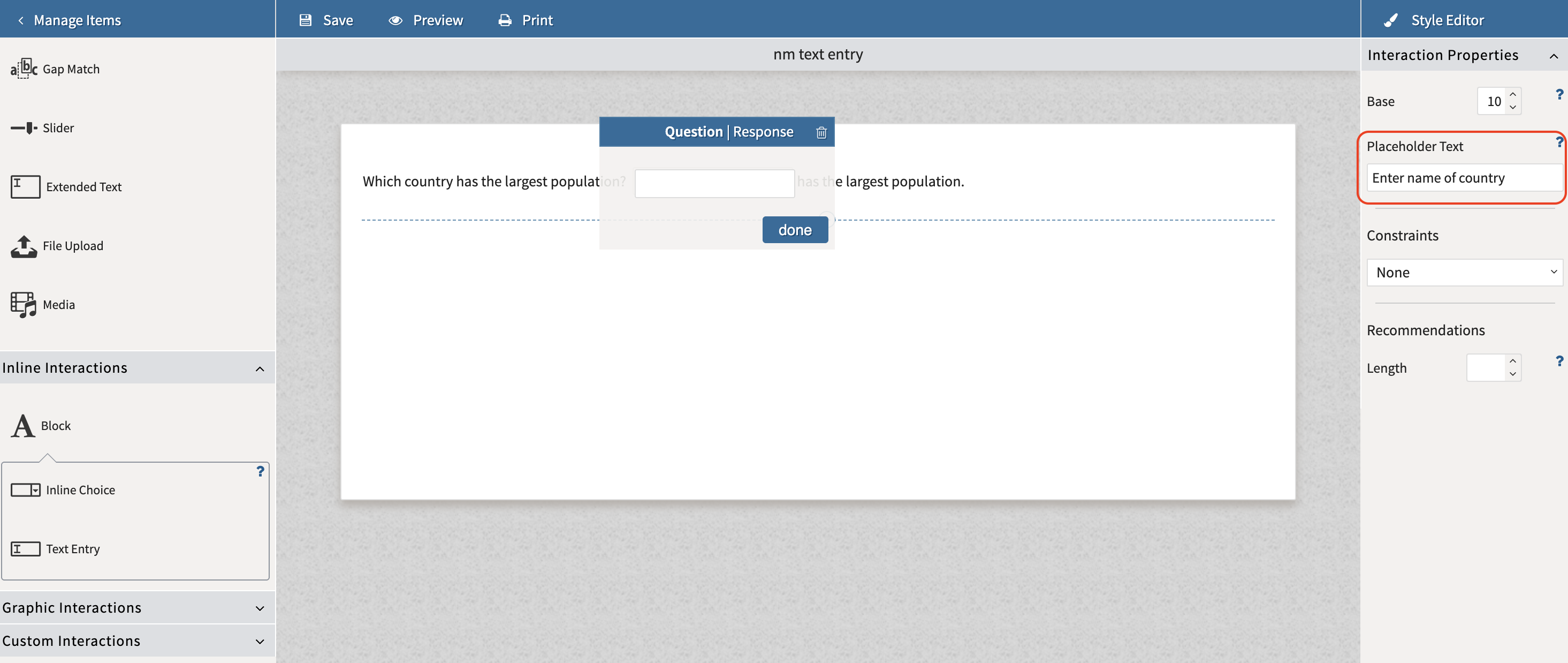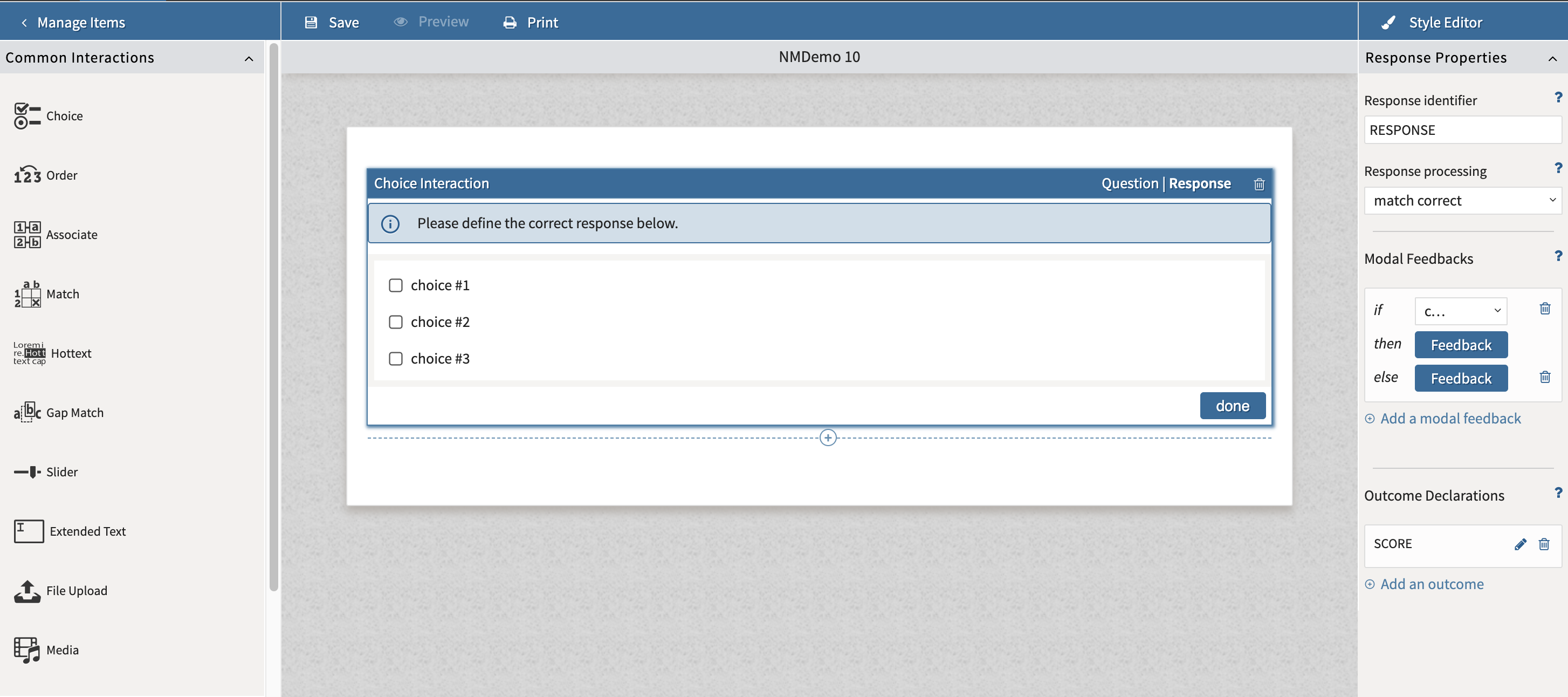Giving hints and feedback to the test-taker
Interactions can be configured to give hints to the test-taker such as indicating the number of correct responses in a choice-based interaction, and also to offer feedback as test-takers progress through a test item. These options are not available for all types of interaction. The chapters describing each interaction under QTI Interaction Types and PCI Interaction Types will tell you which options are available for that particular interaction.
Hints for the Test-taker
Options to provide hints are configured in the Interaction Properties Panel on the right of your interaction.
Specifying the correct number of answers
You can specify the minimum and maximum number of answers the Test-taker will be asked to provide (before he can continue to the next question). Depending on the type of interaction, this is either called Allowed Choices boxes or Number of associations/matches. For more information on configuring this feature, see Placing constraints on the response.
Inserting ‘placeholder’ text in the blanks
If you would like to put instructional text in the field(s) the test-taker is supposed to fill in, such as “Write your answer here”, enter it in the Placeholder Text field. This feature is generally used for Text Entry interaction.

Adding placeholder text to Text Entry interaction
Giving hints about the text length
You can provide hints for the test-taker about the length of the text by filling in the Recommendations fields. This provides the test-taker with an expected length, in either characters or number of lines. This feature is generally used for Extended text interaction.
Inserting modal feedback
Giving feedback can be configured in the Response Properties Panel on the right of your interaction.
Modal feedback can be defined as a message presented to the Test-taker outside of the Item, when the test-taker selects an answer. Feedback may be triggered by either a correct or an incorrect answer, depending on the conditions set by the test author.
Follow the steps below if you would like the test-takers to receive modal feedback during this interaction:
1. Select the Response tab of the interaction.
2. Click on the Add a Modal Feedback button in the response properties.

Adding Modal Feedback to your Interaction
This opens a modal feedback panel in which you can insert the feedback and specify when it should be given.
3. Insert your feedback and feedback conditions.
If the feedback is to be given when the test-taker gets the correct answer, then ensure that the if- dropdown is set to correct. You can also set it to incorrect or any numeric comparative relationship.
Fill in the then- statement by first clicking on the blue Feedback button, and then entering the desired text in the pop-up window. When complete, click the done button.
If alternative feedback for the opposite condition is required, click the Feedback button for the else-statement, and follow the same procedure used to set up the initial feedback.
If additional modal feedback is required, then click the Add a Modal Feedback button below your first Modal Feedback and repeat the above steps.
4. Define the answers that will trigger the modal feedback message.
Select the Response tab of the interaction. In the response processing dropdown menu, select either Match Correct or Map Response.
When using Match Correct, the correct answer(s) will be defined as part of that option’s required configuration. For Map Response, select Define Correct Response under the dropdown menu to define the correct answer (which will be used to trigger modal feedback).
